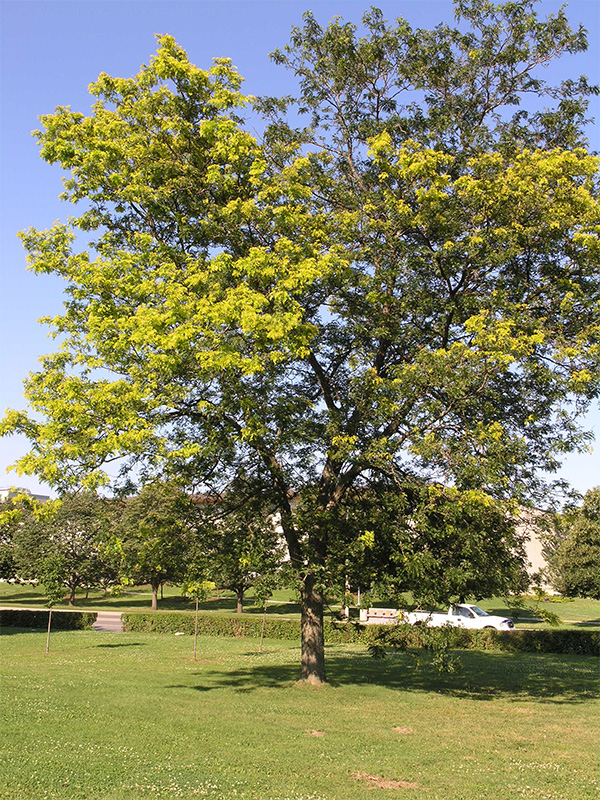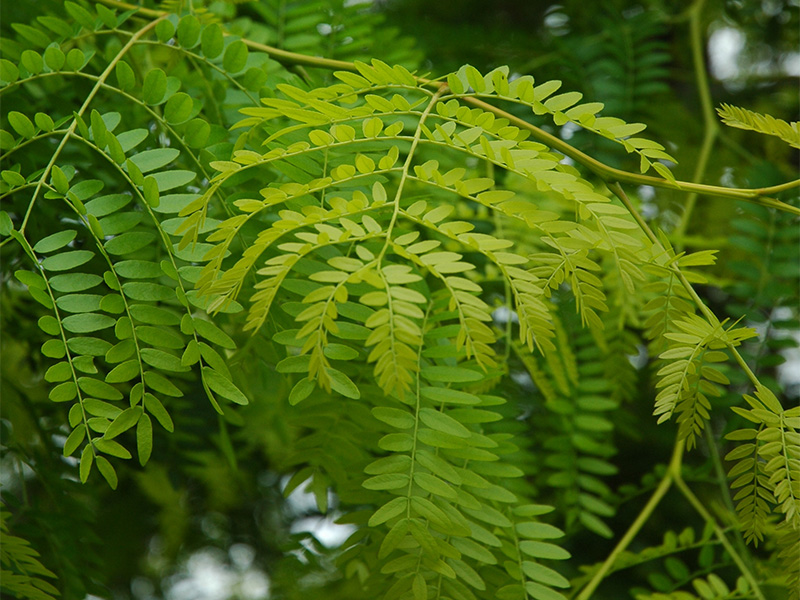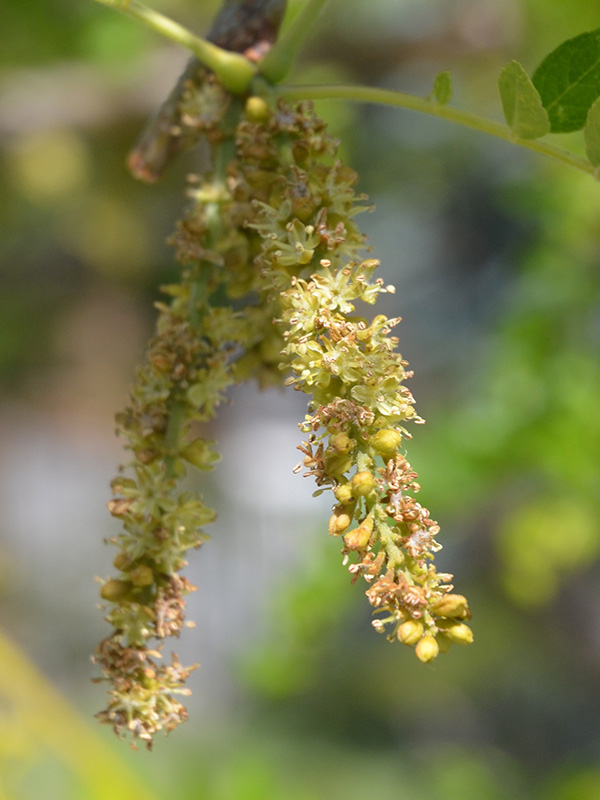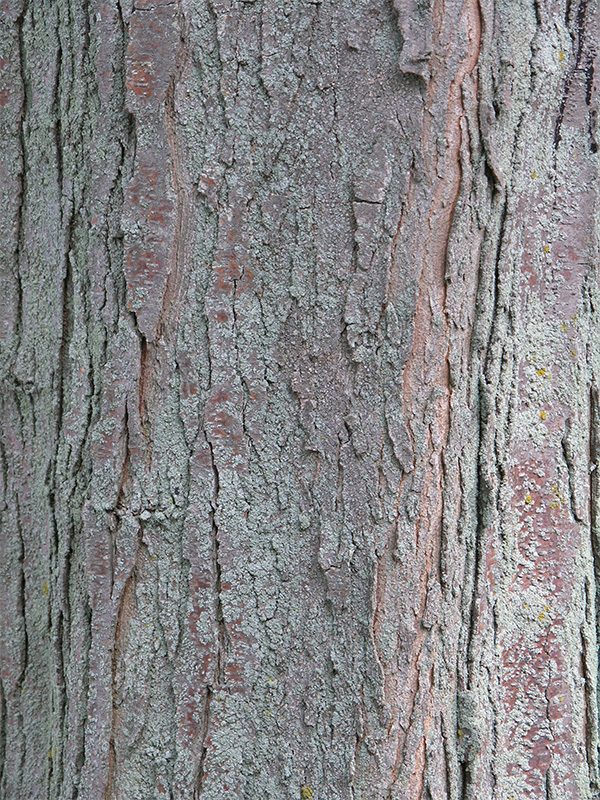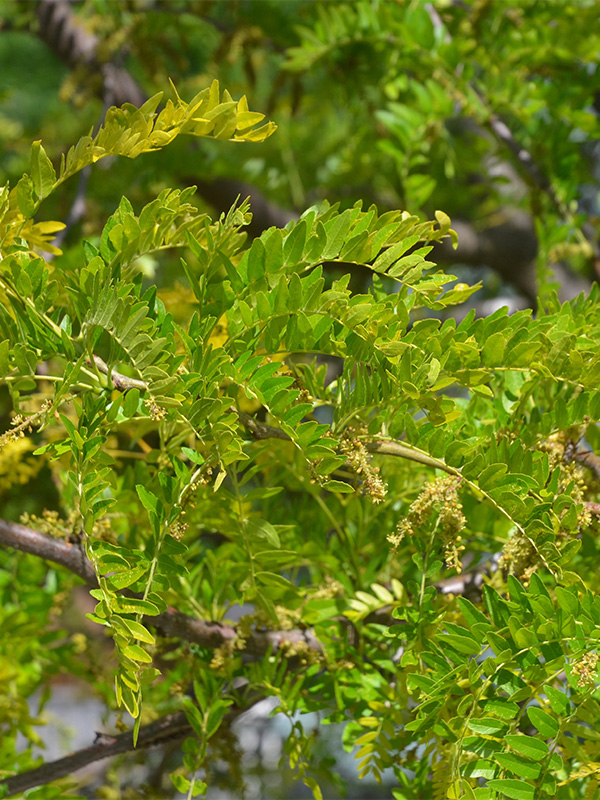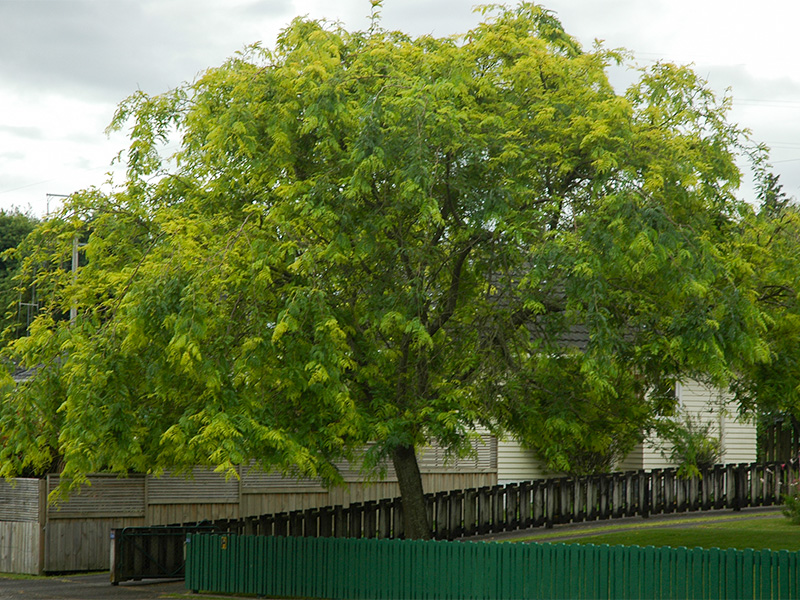
Woody > Gleditsia > Gleditsia triacanthos > Gleditsia triacanthos var. inermis 'Sunburst'
Gleditsia triacanthos
var. inermis 'Sunburst'
Sunburst Honeylocust
Origin: Introduced to North America in 1770.
Mike's
Opinion


"
Michael Pascoe, NDP., ODH., CLT., MSc. (Plant Conservation)
"
| Family |
| Fabaceae |
| Genus |
| Gleditsia |
| Species |
| triacanthos |
| Cultivar |
| 'Sunburst' |
| Category |
| Woody |
| Type |
| Tree (deciduous) |
| Variety |
| inermis |
| Pronunciation |
| USDA Hardiness Zone |
| 4 - 9 |
| Canadian Hardiness Zone |
| 4 - 8 |
| RHS Hardiness Zone |
| H7 |
| Temperature (°C) |
| -32 |
| Temperature (°F) |
| -30 |
| Height |
| 12 m |
| Spread |
| 8 - 20 m |
Photographs
Description and Growing Information
Flowering Period
| Landscape |
| Accent or specimen tree. |
| Cultivation |
| Full sun. Prefers rich moist or limestone soils. Drought tolerant. |
| Shape |
| Broadly pyramid shape |
| Growth |
| Fast |
| Pests |
| Leaf spot, cankers, witches broom, mildew, honey locust borer, webworms and spider mites. |
| Habitat |
| Horticultural origin. |
| Bark/Stem Description |
| Bark is usually broken up into long narrow longitudinal scaly ridges. |
| Flower/Leaf Bud Description |
| Terminal node is absent with small lateral buds consisting of five or more at each node. |
| Leaf Description |
| Alternate, pinnately or binately compound 15 - 20 cm spacing with 20 - 30 leaflets. |
| Flower Description |
| Blooms in early summer. |
| Colour Description |
| The leaves are dark green in summer and yellow in both spring and autumn. The flowers are greenish-gold. The bark is a greyish-brown colour. |
| Texture Description |
| The leaves are smooth in texture. |
| Notable Specimens |
| The Gardens of Fanshawe College, London, Ontario, Canada. The Royal Botanical Gardens, Burlington, Ontario, Canada. |
